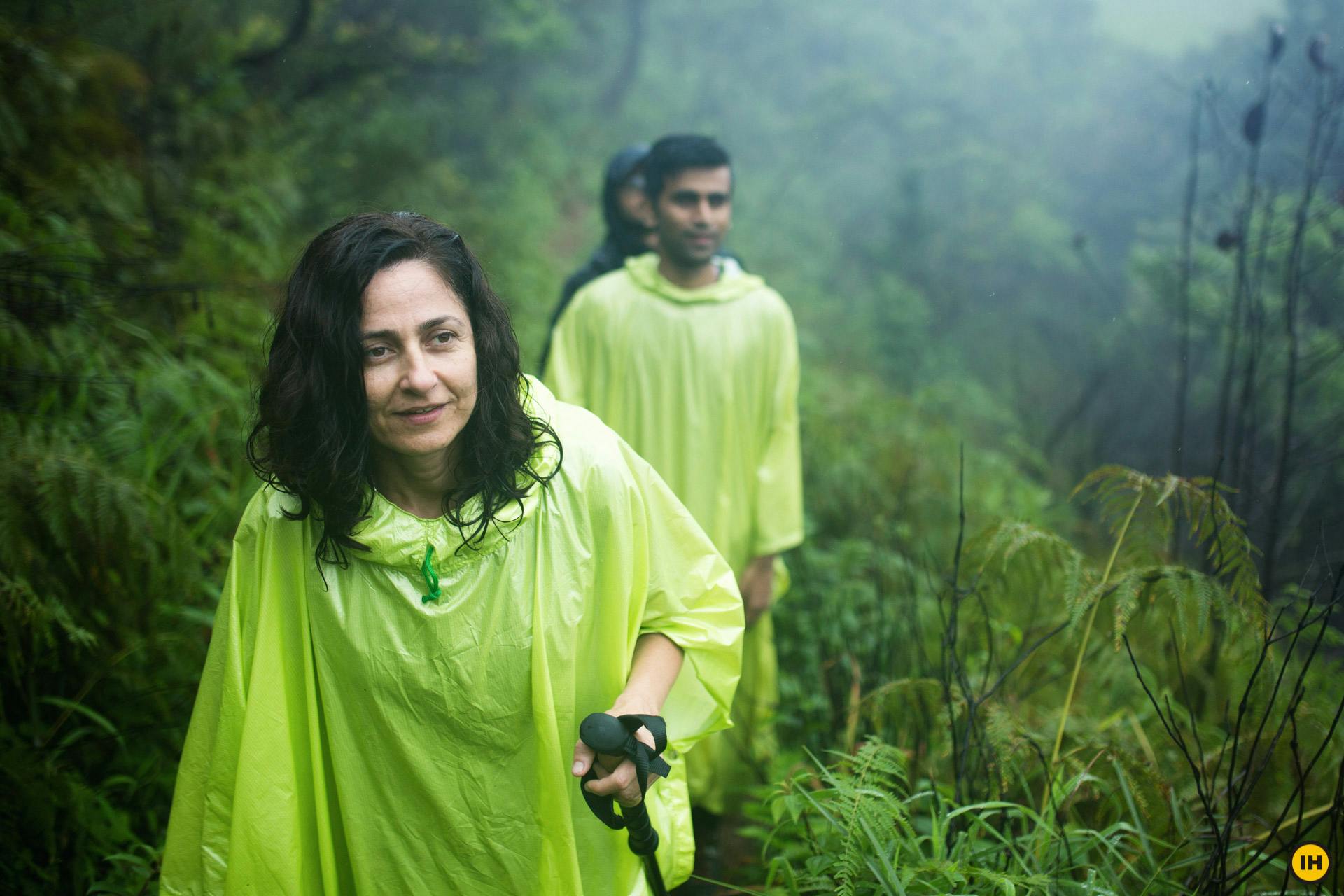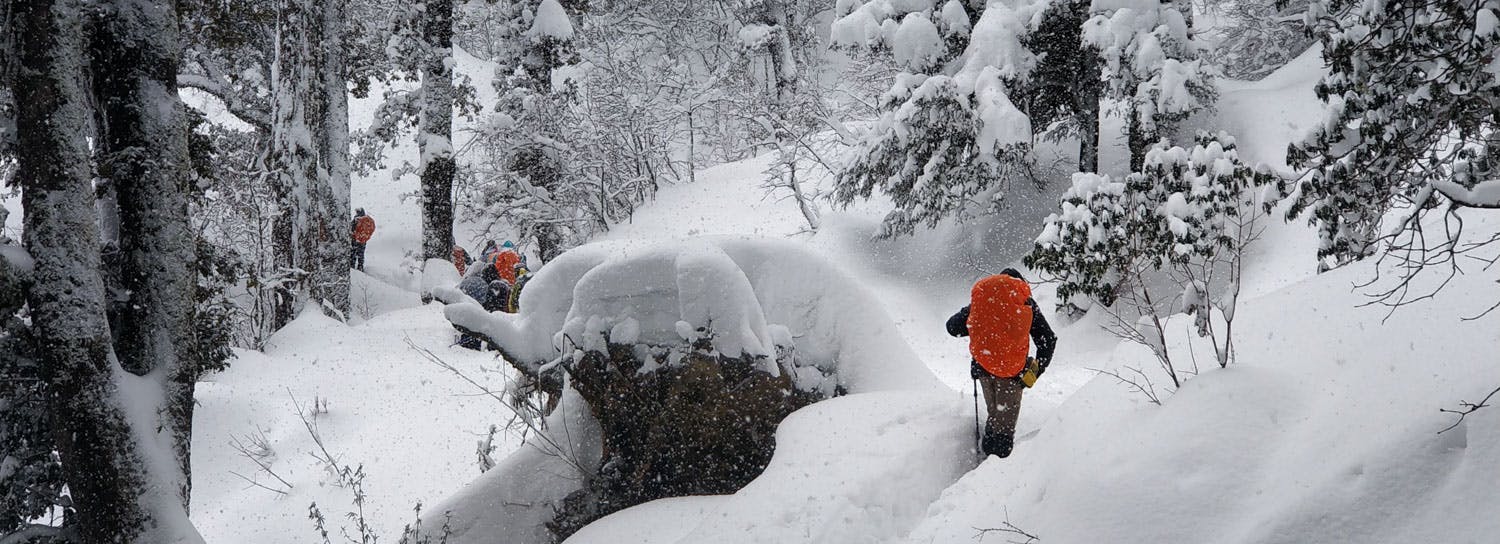Why trek the Do-It-Yourself Way
Quietly, under our feet, trekking is changing in our country. More and more trekkers are taking to the mountains. But they are trekking differently. They are trekking on their own without the support of any organisation. They are trekking the Do-It-Yourself way.
DIY trekking is not new in our country. In fact, much before Indiahikes started, DIY was the only way I trekked.
Today, many years later, I realise how different trekking has become. While at Indiahikes, we have consciously tried to recreate the experience of DIY treks, it can never be the same as a true DIY trek.
This is why at Indiahikes, we have launched DIY treks.
– Arjun Majumdar
Founder, CEO, Indiahikes
Why trek the Do-It-Yourself Way
Quietly, under our feet, trekking is changing in our country. More and more trekkers are taking to the mountains. But they are trekking differently. They are trekking on their own without the support of any organisation. They are trekking the Do-It-Yourself way.
DIY trekking is not new in our country. In fact, much before Indiahikes started, DIY was the only way I trekked.
Today, many years later, I realise how different trekking has become. While at Indiahikes, we have consciously tried to recreate the experience of DIY treks, it can never be the same as a true DIY trek.
This is why at Indiahikes, we have launched DIY treks.
– Arjun Majumdar
Founder, CEO, Indiahikes
How We Will Assist You
The Camping Kit comes with
- Crosstrek Lite Expedition tents
- Lightweight sleeping bags (-10 °C)
- Mats and groundsheets
- A shovel
- Safety equipment (microspikes and gaiters + oximeter)
- Kitchen kit (with required vessels/utensils + a camping stove and gas canisters)
The Food Kit has specially made dehydrated and premixed food used on expeditions
This kit is marked out, and you will get an instruction manual on how to cook your food. Each day’s kit has your
- Breakfast
- Lunch
- Dinner
These food kits do not require cooking. To prepare your meals, you just need to add warm water, which is ready to eat.
Our R&D team has specially designed the menu. It is exactly what you need on a trek. It does not resemble home or restaurant food.
A DIY Guide will help you with:
Assisting in carrying a bit of load for the trekker and Safety on the trek.
As a DIY trekker, you will have to carry a weight of 9-10 Kg similar to any regular trekker. The additional weight will be supported by a DIY guide from the local village.
Since the DIY guide is from the same region, this will give you an additional net of safety on your DIY trek.
For treks around Bangalore, you can rely on the GPX file that are accessible for trekkers.
Some questions you may have
The DIY treks we have opened are easy to be attempted by beginners. If you have trekked locally, you can definitely attempt these DIY treks.
But if you have never trekked before (not even near your home), then it’s better you trek with Indiahikes first (with our regular teams) and then attempt a DIY trek. That way, you will be better prepared to trek on your own.
On another note, if you’re going with a small team of 3-4 trekkers, even if one or two of you have some trek experience, it will help.
The two biggest fears on a high-altitude trek are getting lost and getting hit by AMS. The GPX file (which comes with a tutorial on how to use it) will ensure you don’t get lost. As for AMS, we will equip you with a medical kit so that you can tackle initial symptoms on your own. Please make use of all our resources to learn about AMS here.
Additionally, we have opened treks in Uttarakhand, knowing that the regular Indiahikes teams will be camping nearby. You can fall back on them as a safety net.
The DIY kits cost on a per-person-per-day basis. For example, the camping kit costs Rs 950 per person per day. The food kit costs Rs 250 per person per day. The navigation kit costs nothing.
The costs of these kits include almost all expenses that you would incur on a trek.
To give you an idea of costs for a 4-day Himalayan trek, an average cost per person for a trek would roughly come to Rs 5,200, all kits included.
However, this kit is customizable if you have some equipment of your own. Doing so will bring down the overall cost of the kit.
(There will be separate charges if you need accommodation at the base camp or guides and mules for your trek.)
You can do any DIY trek with these 3 kits and our rental store. If you are trekking in a group, each trekker is expected to carry a backpack of 9-10 kg. This load is not something that will wear you down. It doesn’t spoil your trek’s enjoyment.
When we trekked on our own in the early days, our backpacks weighed around 20 kg. We didn’t like carrying so much weight. This is why we were conscious that our team designed the kits so that no one would carry more than 10 kg each with the help of the porter guide.
The DIY Kits are available for treks around Uttarakhand and Bangalore.
Additionally, when we have our season of Himachal and Kashmir, trekkers can collect the kits from our operational base office space.
How To Go About It
You can select DIY treks in Uttarakhand and Bangalore
Given this new trekking style, we are introducing DIY Treks with a local DIY guide.
You can select any trek of your choice in Uttarakhand. If you do not have enough trek experience of trekking at high altitudes, then it is better to always start with easy or easy-moderate treks and then taking up something more challenging.
Note: For treks in Uttarkashi, Himachal Pradesh and J&K, trekkers must have a mandatory guide.
Decide the gears you need for the trek
We have made three DIY Kits to make your trek easier - a Navigation Kit, a Camping Kit, and a Food Kit. These kits include everything you would need to trek comfortably and safely.
We also understand that you may already have some gear, which you may not need from us.
You can discuss this with our Experience Coordinator and arrive at a final equipment list.
Collect your kits from our team
Our team at Dehradun for Uttarakhand or from our office at Bangalore can give you the kits required for your DIY Trek.
You will have to provide a security deposit of Rs 10,000 and an original ID Card (either an Aadhar Card or Passport).
Once you collect the kits, you can report and meet our Slope Manager at the basecamp before you start the trek.
With a loaded GPX file on your phone, and your camping and food kits, you are all set to go on your DIY trek.
Videos to help you on your DIY Trek
What Trekkers Say
Disha Shah
DIY trek to Nag Tibba, April 2024
Archita Sharma
DIY trek to Har Ki Dun, April 2024
Johnson Veigas
DIY trek to Dayara Bugyal, April 2024
Varun Trivedi
DIY trek to Pangarchulla Peak, April 2024
Additional Resources to get ready
A Complete Guide on How to Use GPX Files
How We Introduced Lightweight Gear for DIY Trekkers
Trekking Alone? Here Are Tips From An Expert Solo Trekker
5 Signs You May Not Recognise as Acute Mountain Sickness (AMS)
What is Acute Mountain Sickness? Understanding AMS, HAPE and HACE
10 Tips to Trek Like a Pro During Monsoon
How to Prepare for a Himalayan Winter Trek - All You Need to Know
Sign up for our much loved Weekly Mailer
We have terrific trekking tips, trek updates and trek talks to look forward to




































